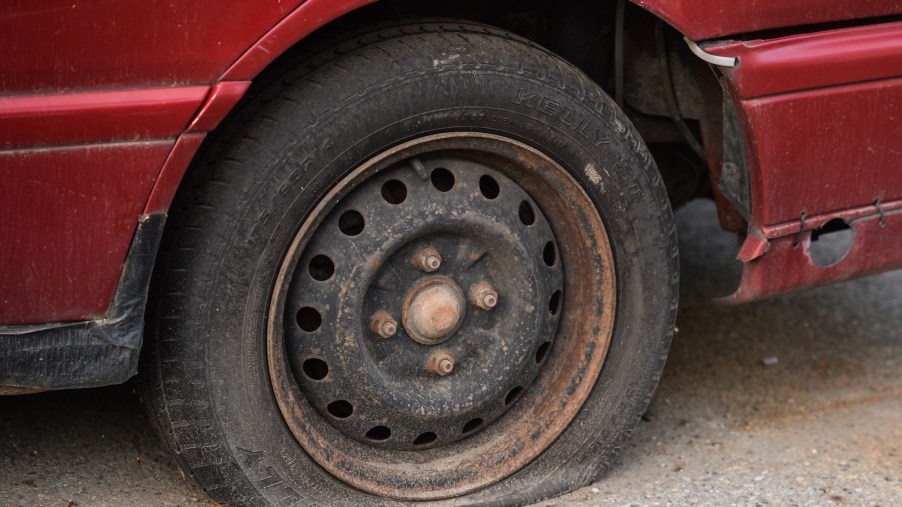
Here’s Why Driving on a Flat Tire Is the Worst Idea
Regardless of the make or model, a common factor in all vehicles is their need for four properly inflated tires. An essential part of car safety is knowing what to do when an unexpected flat tire occurs.
Inspecting tires regularly and understanding how to avoid a flat tire will enhance performance and ensure your safety. And knowing when to replace a tire before unforeseen damage occurs avoids costly repairs.
But if a blowout does occur, it’s crucial to get the vehicle to a safe destination before attempting to change the tire. Just remember: It’s never a good idea to drive on a flat tire, and here’s why.
How to avoid getting a flat fire
A significant reduction in air pressure results in a flat tire. Whether caused by a sharp object or an unforeseen slow leak, a damaged tire demands immediate attention.
Inspect all of your tires for punctures, bumps, or bulges, indicating a problem that could hinder performance. Occasionally, defects in the manufacturing process can be the culprit. Look for cracks and splits in the rubber, indicating the tire is old and needs repair. The most common reason for a flat tire is excessive wear-and-tear combined with improper air pressure. A certified mechanic can inspect the tire to determine if it’s roadworthy.
AutoGuide recommends replacing a tire if the tread depth is under 2/32nds. When a tire’s steel belt is showing, you shouldn’t drive on the tire at all. And under-inflated or damaged tires can damage your vehicle and result in costly repairs.
Why you should not drive on a flat tire
For many reasons, driving on a flat tire is a bad idea, not just for your car, but for your safety. Driving on a flat tire on uneven surfaces can cause extensive damage to your vehicle’s wheelbase. The metal portion that secures the tire can become irreparable when exposed to rough driving conditions. The tire rim can also get bent and pull your vehicle out of alignment.
More important, you risk bodily injury when you drive on a flat tire. It’s easy to lose control of the vehicle without having proper traction. A resulting crash could cause property damage and physical harm to you, your passengers, and others on the road.
And operating the vehicle at an increased speed with a flat tire will damage the wheel even further. Try to avoid road hazards such as potholes, bumps, and broken asphalt. If possible, avoid steep inclines that will put undue pressure on the wheel. Wet and slippery terrain can also be difficult to maneuver with a flat tire.
What to do when you have no other choice
There’s never a convenient time to get a flat tire. Sometimes, circumstances prevent you from pulling over and getting out the spare tire. Whether you find yourself on a lonely backroad or traversing a busy interstate, the area might not be safe to pull over.
But never try to drive more than several hundred yards on a flat tire. If traveling a short distance on a flat is the only option, avoid rough terrain and pull over as soon as it’s safe to do so. Avoid fast acceleration, and keep the car under 15 to 20 mph.
Also, try to avoid winding roads and steep curves that will make your vehicle go faster. Use the most direct route and coast to your stopping point, avoiding sudden braking. Let your vehicle coast and resist drag from the flat tire by holding the steering wheel tightly.
Getting to a safe and well-lit area to change a tire is crucial. Look for the closest unoccupied space you can find. A level surface is preferred. If you’re on a busy highway, pull over only on a well-established shoulder. Be aware of passing vehicles, and use extreme caution when opening your door.
Plus, use your car’s hazard warning lights to alert passing motorists of your difficulties. Getting a flat tire is scary, but knowing how to handle it can make all the difference.


